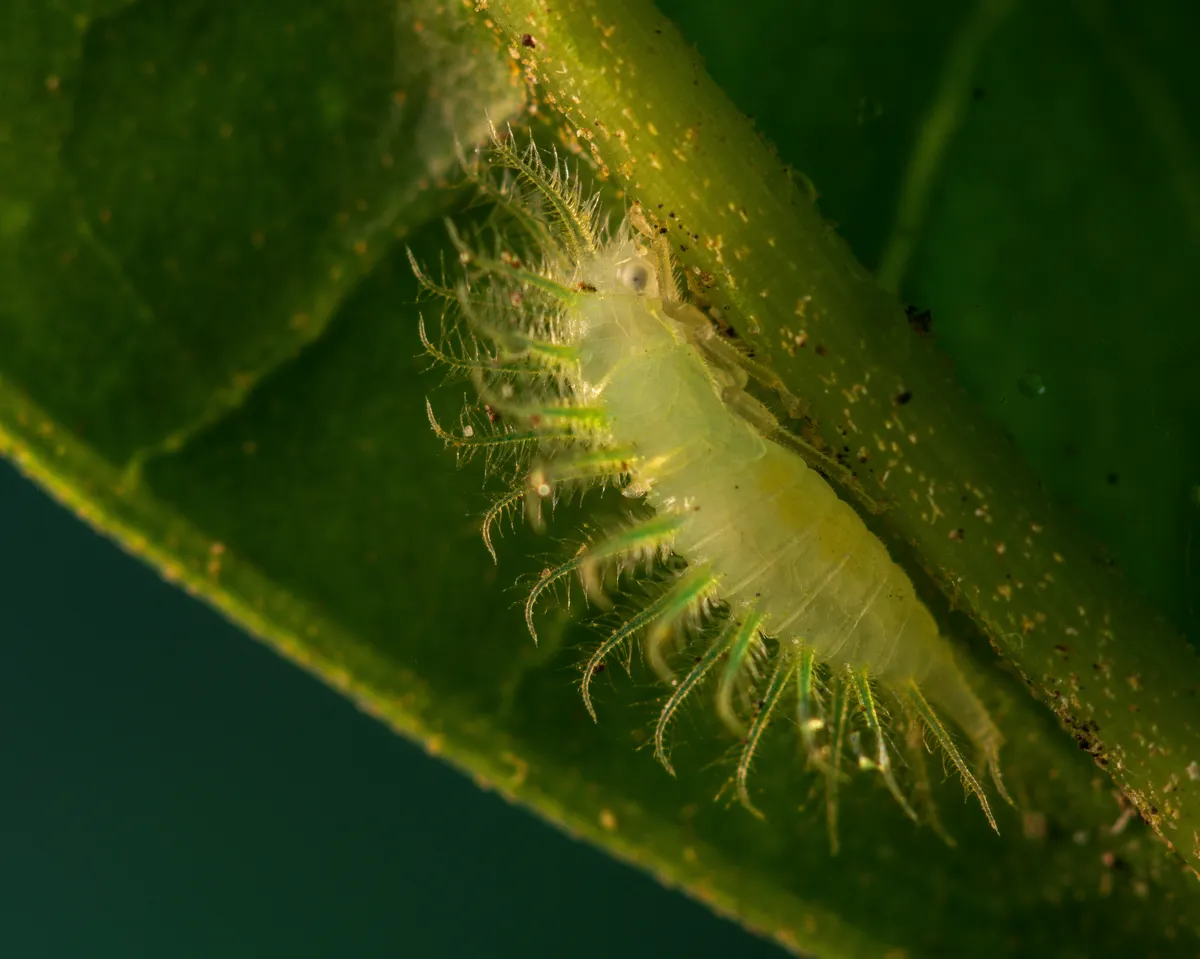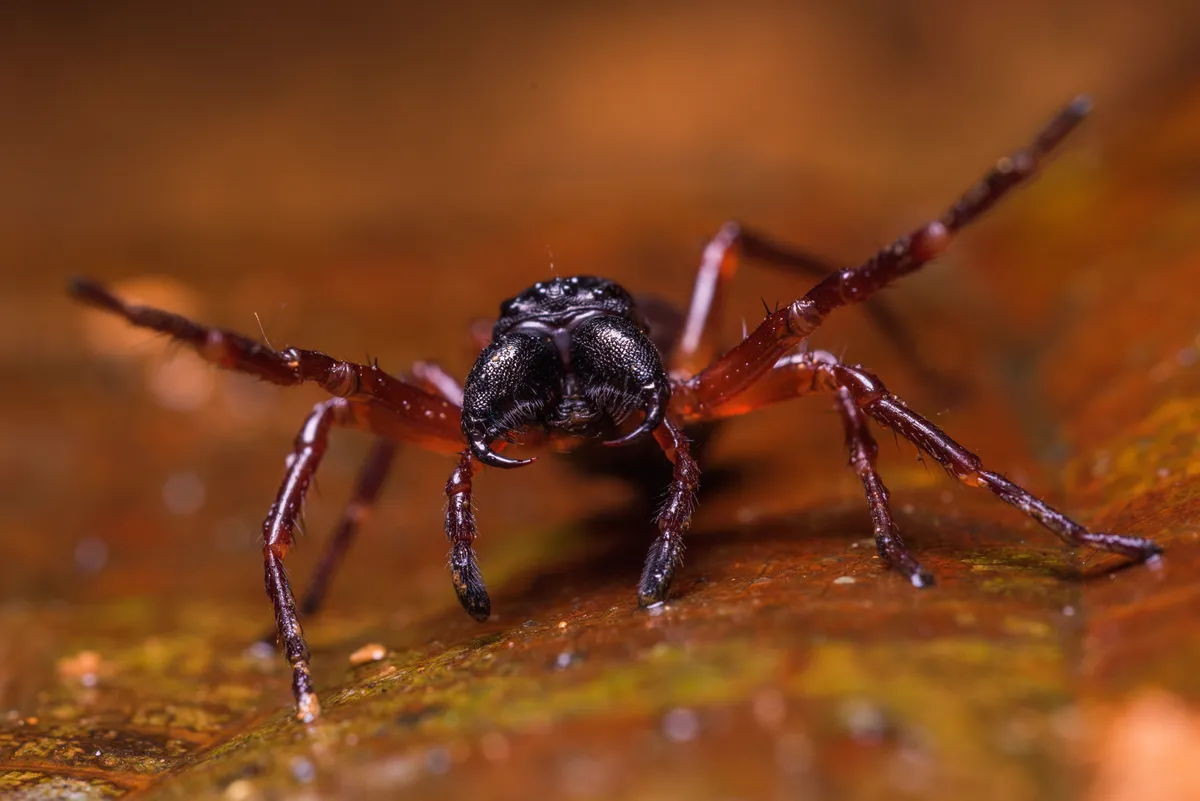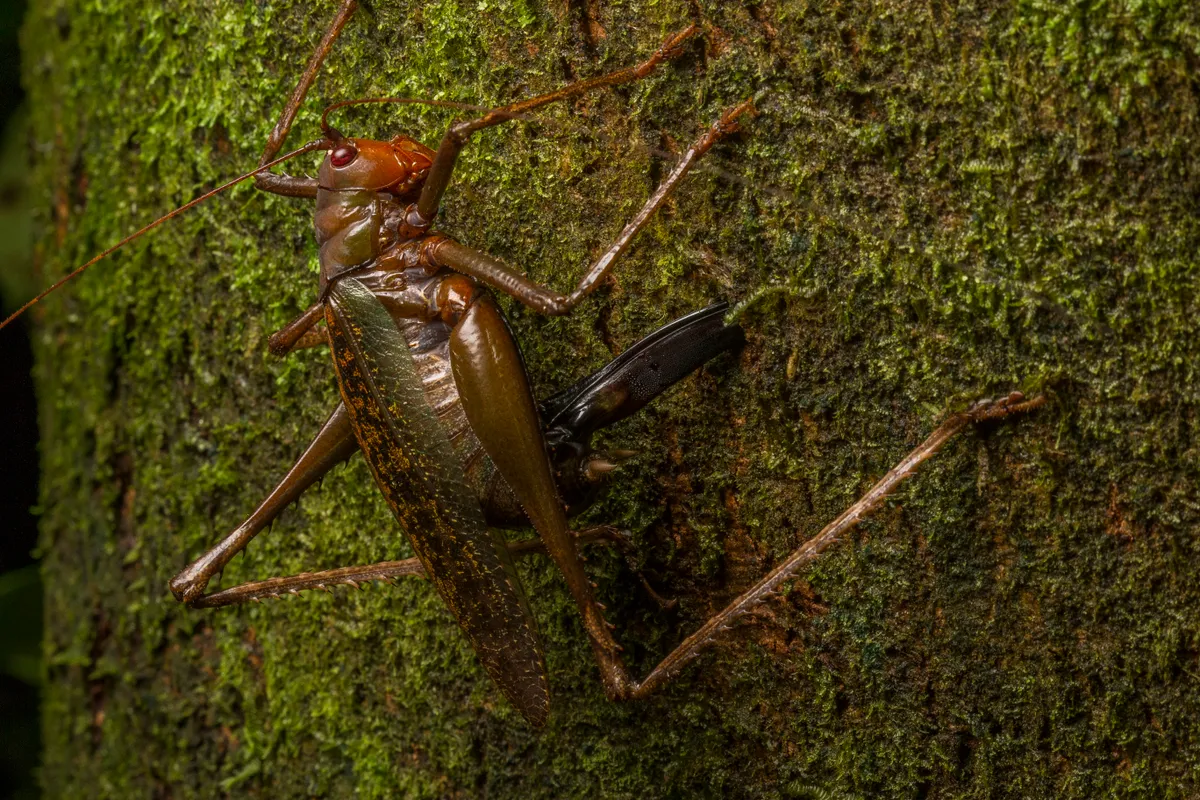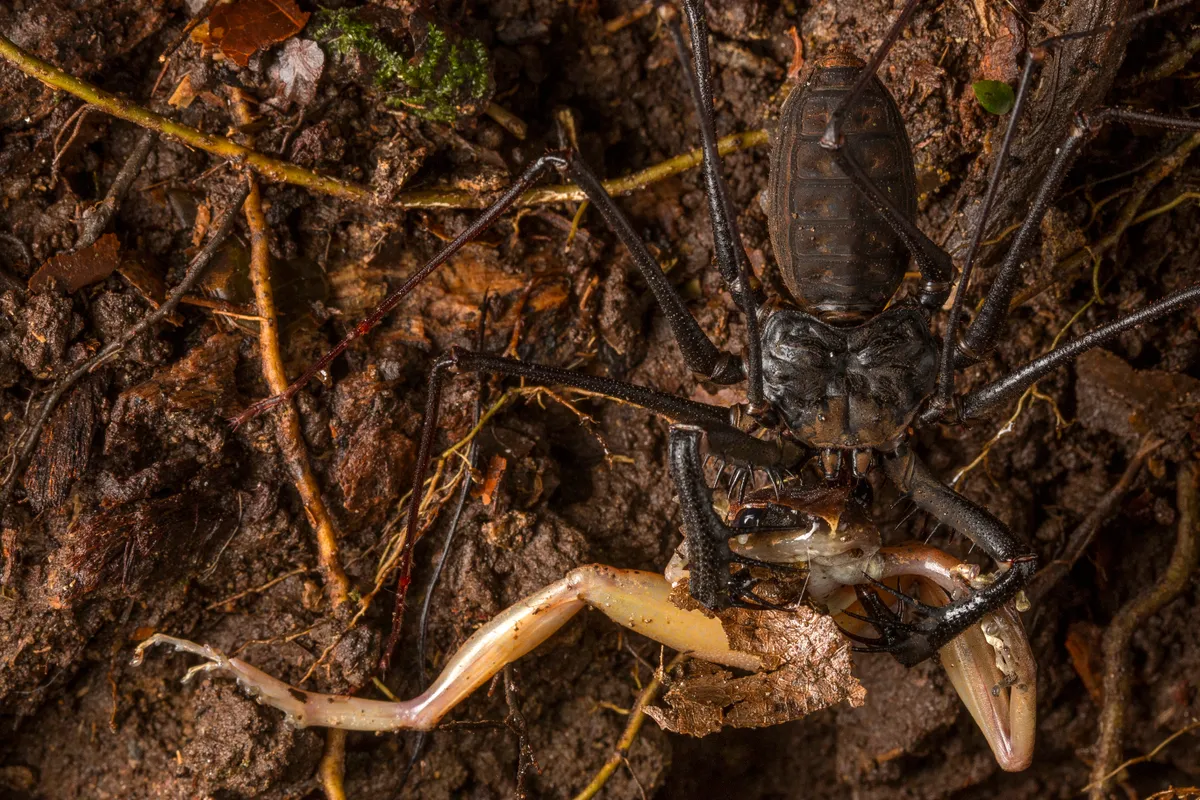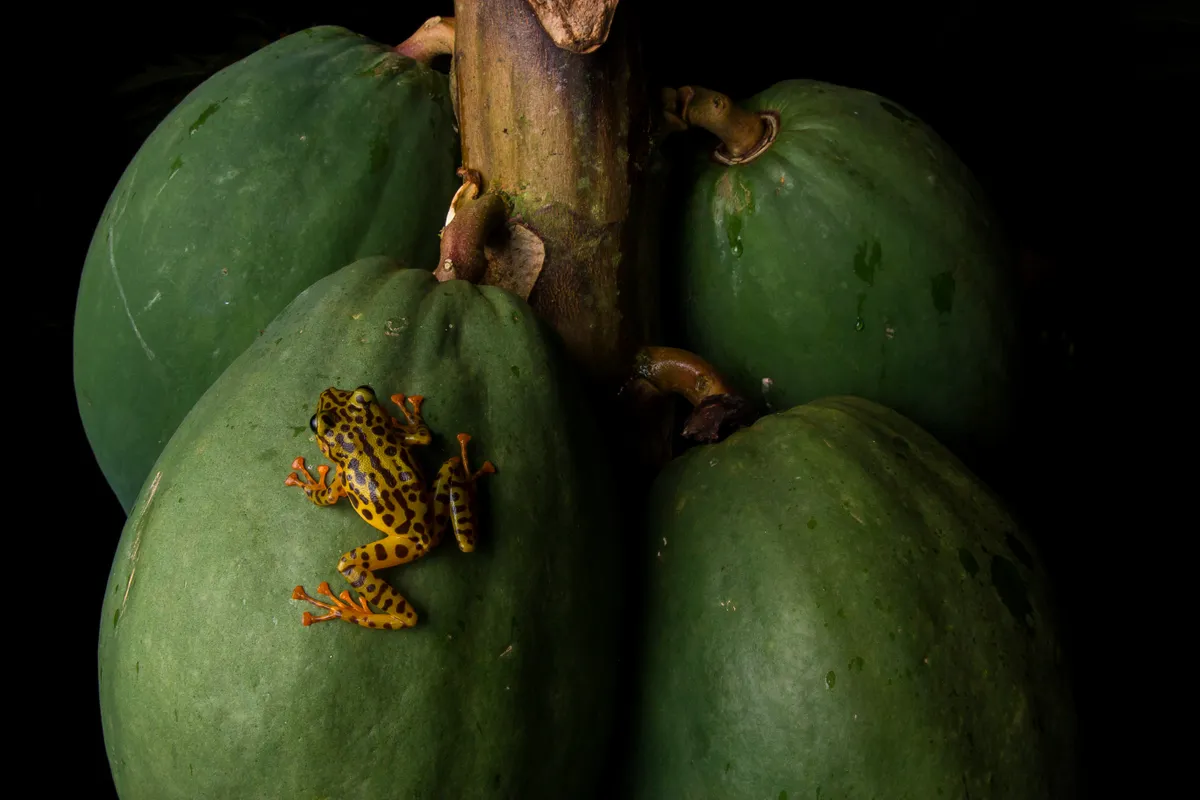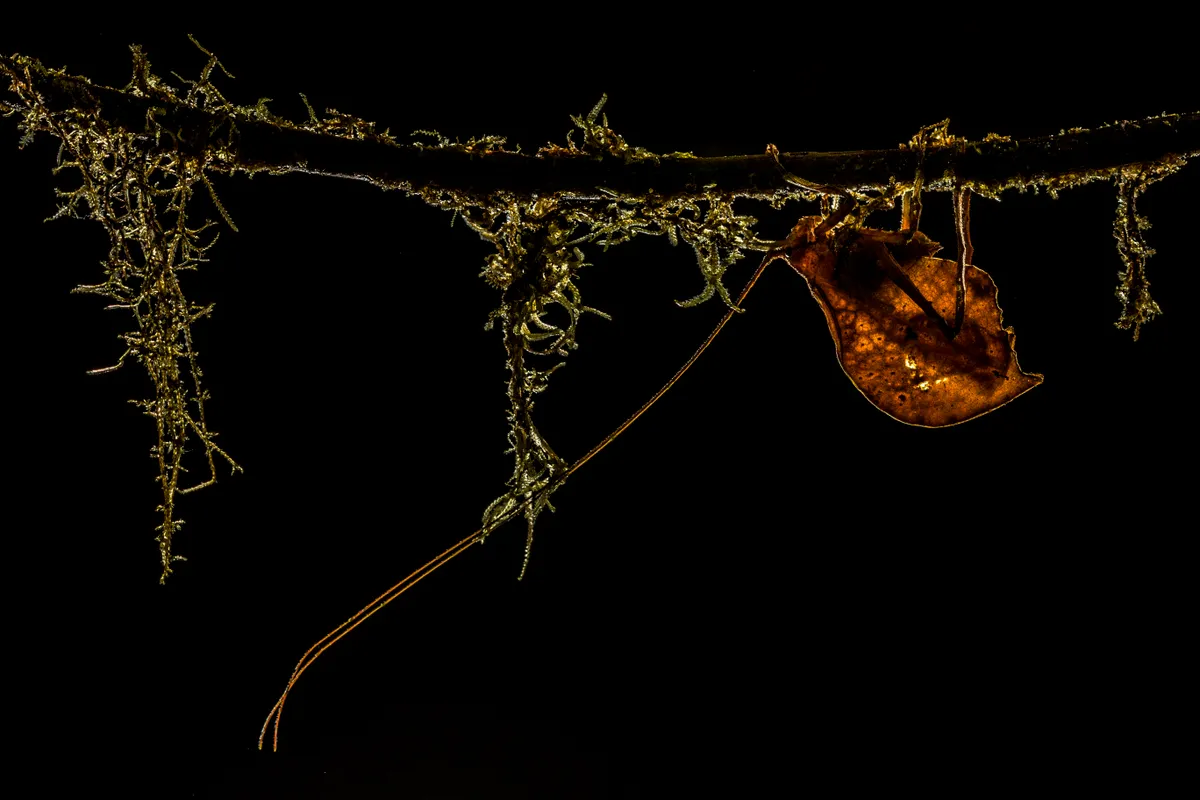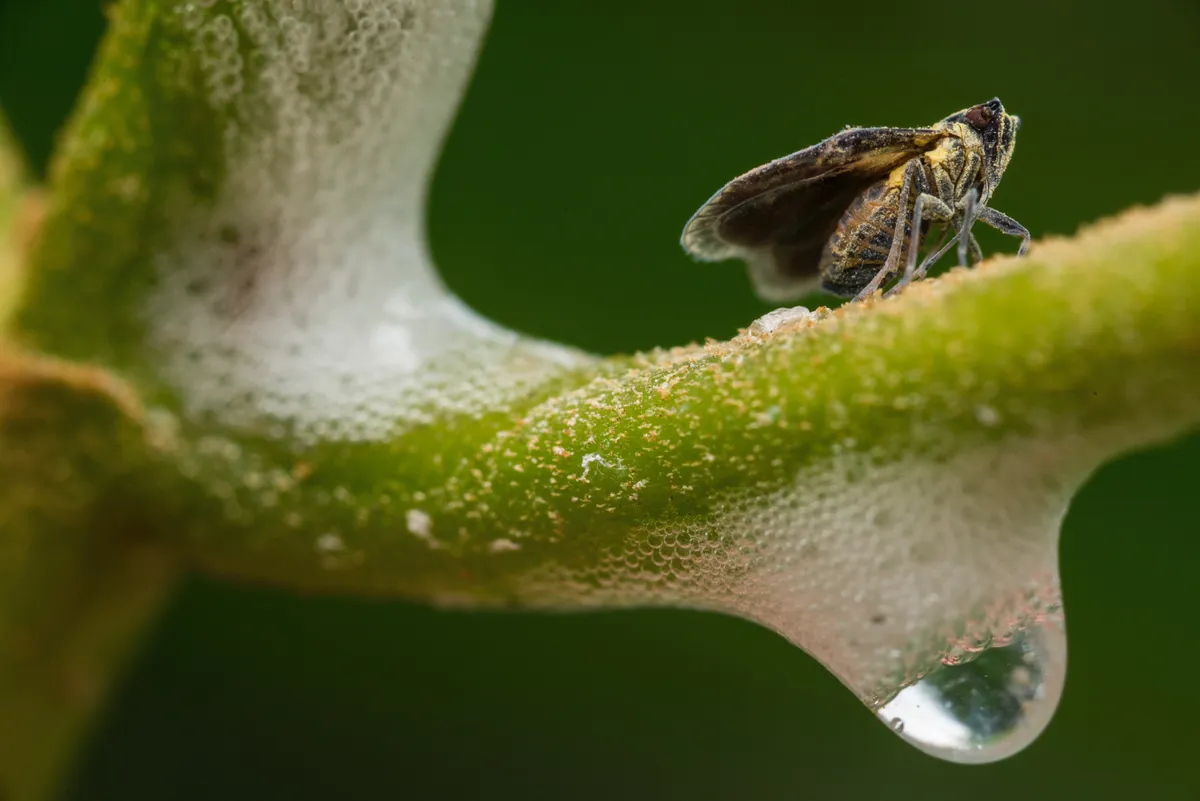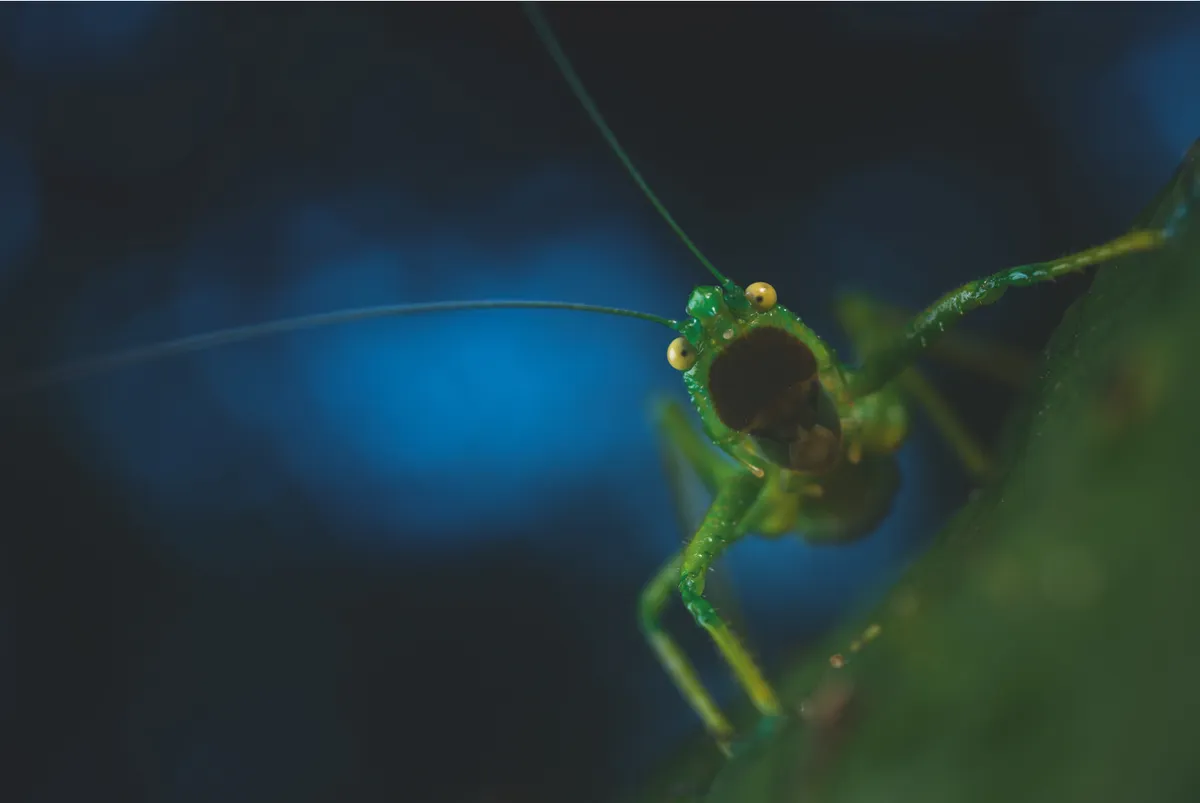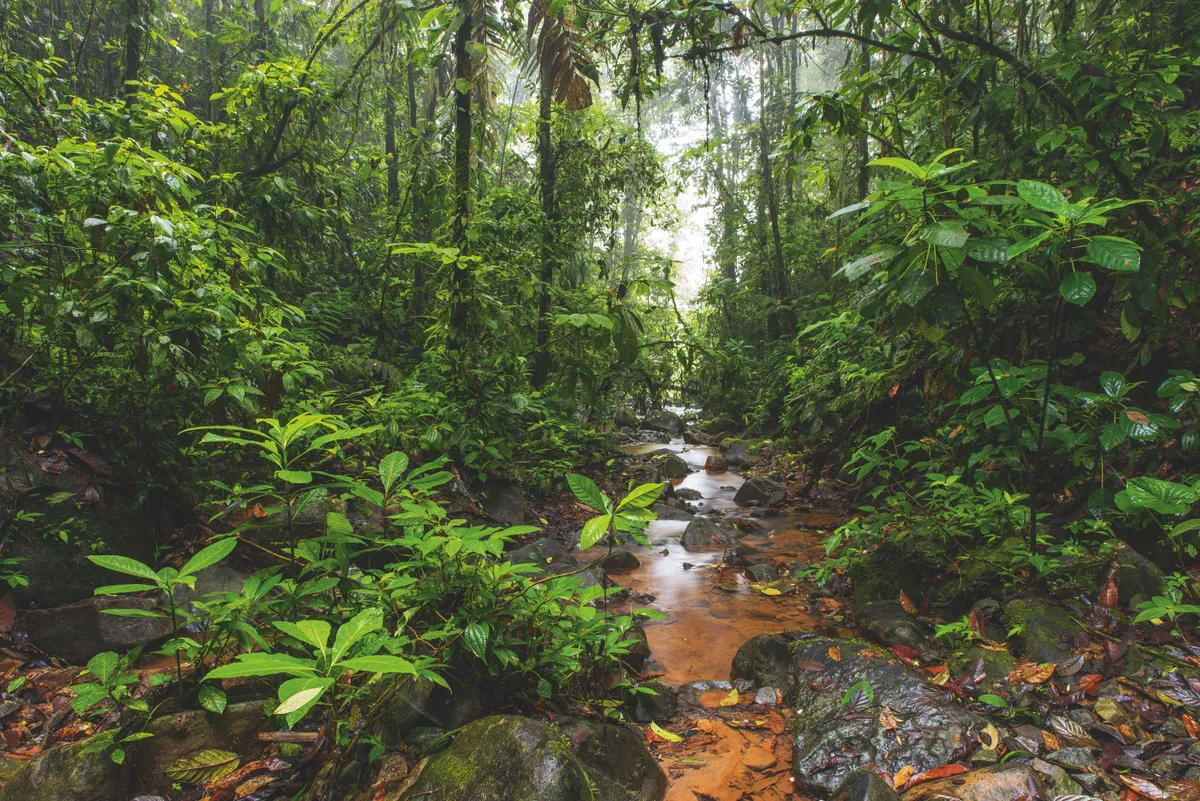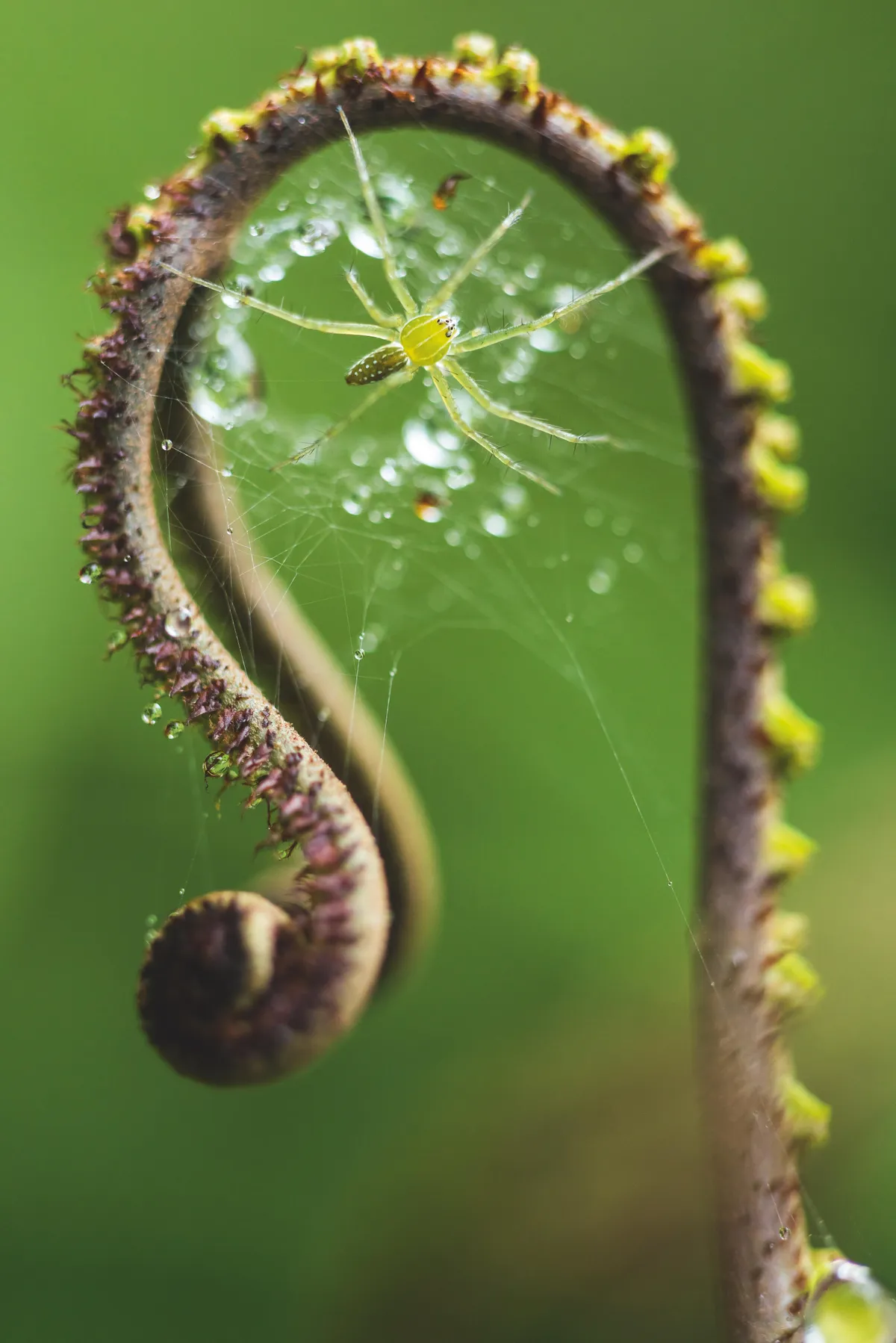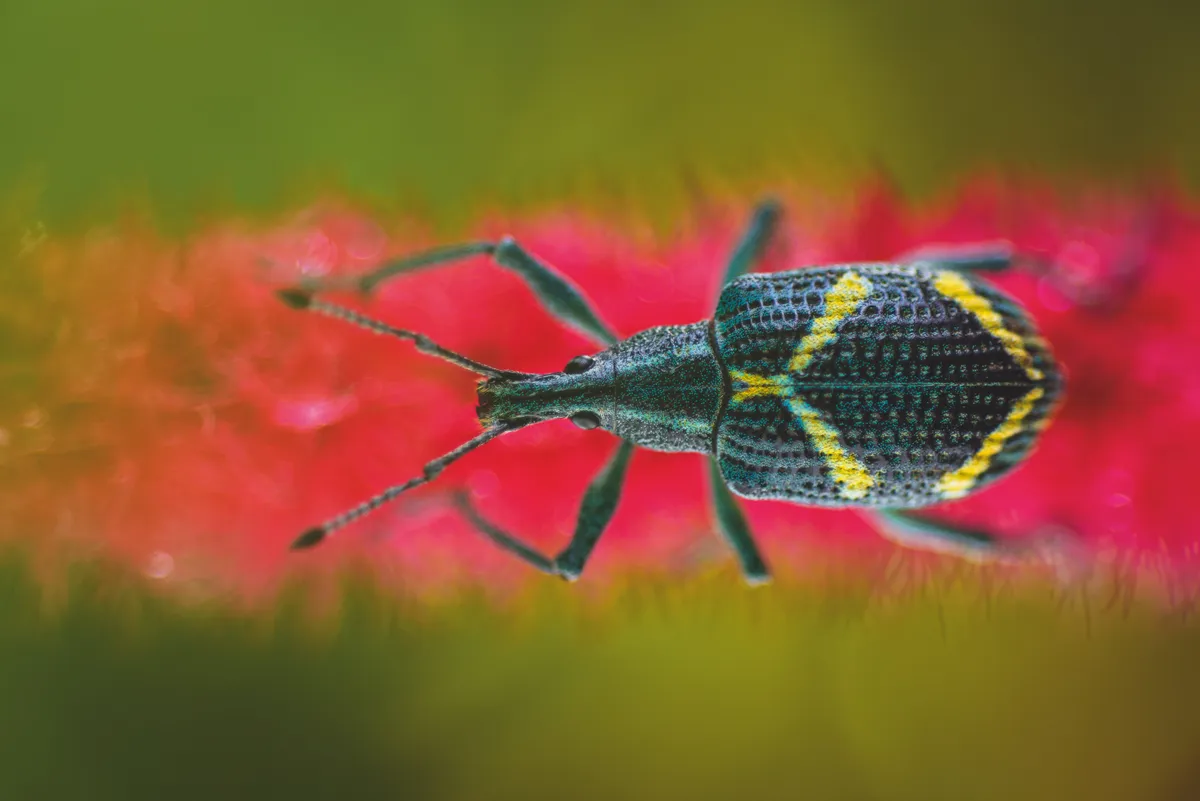About the photographer
Javier Aznar visited El Jardin de los Suenos, a private reserve in Ecuador, to photograph small hidden treasures in this rich coastal rainforest.
Javier Aznar is a biologist and Wildlife photographer from Spain. He is part of the Emerging League of the International League of Conservation Photographers (iLCP).
He has travelled to Omán, Morocco or Ecuador, where he has been documenting the wildlife of the most remote places in these countries, and the threats that are causing them to disappear.
You can view more photos on his website .
This gallery features some of the images which originally appeared in BBC Wildlife's June 2017 issue.
To view the images as a slideshow, click on the arrows in the top right hand corner of the photos below.
A nymph of an unknown species of treehopper, feeding on the savia of a leaf. These animals have bizarre forms and shapes, having spines, hairs and other structures with defensive function, as well as camouflage. © Javier Aznar An unknown species of spider poses in a defensive position in front of the camera. When they feel that they are under threat, they put the legs up in the air, and open the big chelicera, to scare predators. © Javier Aznar A female katydid (bush-cricket) lays her eggs inside the bark of a tree during the night. The females have a special organ called an ovipositor, at the end of their body, which they use to put the eggs inside the bark of a tree, in small stems, or the ground. © Javier Aznar A rare scene photographed during a humid night, the predation of Pristimantis achatinus by a whip spider, Heterophrynus armiger. © Javier Aznar Pristimantis ornatissimus is a frog species endemic to Ecuador, list as Vulnerable on the IUCN Red List. Each day they become more scarce due to the destruction of their habitat, for oil palm plantations, mining and other causes. © Javier Aznar Leaf-mimicking katydid photographed during the night, when they are active and can be found eating leafs. During the day, they rest immobile in the vegetation and dry leafs, camouflaged. © Javier Aznar A hopper makes a special spume for the nymphs to grow inside. © Javier Aznar A bonehead katydid (bush-cricket) nymph sits on a leaf. When they are an adult, with fully grown wings, katydids 'sing' by rubbing a comb-like row of pegs under the left wing on a plectrum-like ridge on top of the right wing. © Javier Aznar A river runs through pristine primary forests inside the El Jardin de los Suenos. The Choco is one of the wettest regions in the world, home to a huge number of species, including more than 10,000 vascular plants. © Javier Aznar A green huntsman spider stalks its prey through the herbage, using its long legs to sense vibrations and then lunge suddenly and effectively. This female has started to create a silken cradle under the unfurling fern frond. © Javier Aznar Exophthalmus parenthetical, measuring 2.5cm in length, on a forest flower. The striking angular marks on the weevil are a clever silhouette-breaking device. © Javier Aznar 